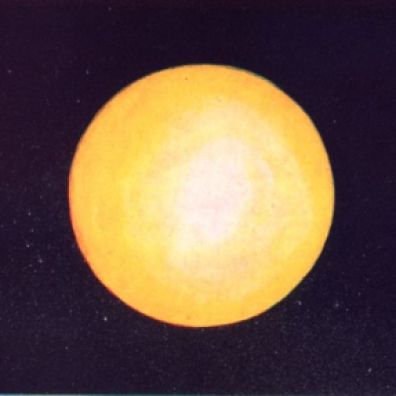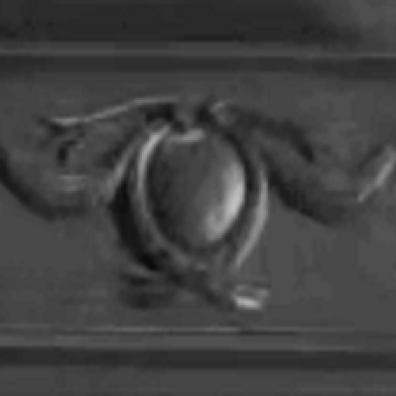What is an egg? Here is Wikipedia’s answer to the question: “An egg is the organic vessel containing the zygote in which an animal embryo develops until it can survive on its own; at which point the animal hatches. An egg results from fertilization of an ovum. Most arthropods, vertebrates, and mollusks lay eggs, although some, such as scorpions and most mammals, do not”.

The embryo, while in the protective shell of the egg, has access to food and warmth. Being inside an egg must feel like being in Heaven, a state to which those who have hatched might want to return. One could argue that David Lynch feels like he is inside an egg when he thinks about his youth of the 1950s (“everything is fine”).
It is also possible to view the egg as a sort of athanor – in alchemy, an athanor is a furnace used to provide a uniform and constant heat for alchemical digestion. Its aim is to make the philosopher’s stone (lapis philosophorum) – “a legendary alchemical substance capable of turning base metals such as mercury into gold or silver… Efforts to discover the philosopher’s stone were known as the Magnum Opus (“Great Work”)… Other mentioned properties: the creation of a clone or homunculus“. Inside the athanor, on finds an ovoid recipient (the philosopher’s egg) that contains the substance meant to change into the philosopher’s stone.
When discussing eggs in the context of Twin Peaks, one cannot ignore Humpty Dumpty from Alice Through the Looking Glass. It’s also tempting to think of her rabbit and link it to the Easter egg hunt (Jack Rabbit’s Palace, for instance). An image from David Lynch’s series of paintings Small Stories (see below) directly indicates just such a link.
It’s also difficult not to connect the creature that hatches at the end of episode 8 and Lynch’s painting below. Franz Kafka and Hieronymus Bosch are not far from these images.
As far as the yolk of the egg is concerned (the nutrient-bearing portion of the egg whose primary function is to supply food for the development of the embryo), it might very well be connected to the gold of alchemy.
The cosmic egg, born of primordial waters and linked to the genesis of the world, contains in germ the multiplicity of beings. According to Vedic spirituality, it was warmed by the goose Hamsa – the Spirit, the divine Breath (the hamsa, or the swan, is often identified with the Supreme Spirit, Ultimate Reality or Brahman in Hinduism).
Helen Valborg, a Theosophist, wrote about eggs in HERMES Magazine: “In Hindu tradition, the ‘Swan of Eternity’ lays a ‘Golden Egg’ at the beginning of each Mahamanvantara… One becomes the many… The very word Brahma comes from a Sanskrit root Brih, which means ‘to expand’. Within the Golden Womb of the Hiranyagharba, Brahma dwells for one Divine Year, at the end of which he divides the Egg into the upper heaven and the lower earth, with a sky of perpetual waters intervening“.

The omnipresence of the egg motif in Twin Peaks can probably be put into perspective through various works of art by David Lynch, such as the heads from his Small Stories series or his exhibition at Les Galeries Lafayettes in Paris (2009) (images: Roland Kermarec). The Freemasons Kneph (flying egg) can also be connected to Mark Frost’s The Secret History of Twin Peaks.
According to the cosmogony of Twin Peaks developed in episode 8 of The Return, the Trinity atomic explosion led to the release of various eggs (by a mysterious entity called Mother) that landed on Earth, where they imported a cosmic sort of evil. Lynch recently declared in an interview for Les Cahiers du Cinéma that the bomb created “a hole” – probably the one between the membranes of the universe(s) that led to such a contamination.
During the recent conference about David Lynch and the arts that took place at the University of Bordeaux (link), Diane Arnaud from the University of Paris Diderot talked about “troublants trous noirs” (troubling black holes, but also a pun on white holes/black holes). It seems to me that this idea of holes (whether they be white or black) is very similar to my concept about the role of sewing in Twin Peaks (a way to attach the various branes of the multiverse together or to mend possible holes in the fabric of spacetime).
The atom bomb from episode 8 generated a sort of “black hole” that broke the normal three-dimensionality of our reality and opened up the door to four-dimensional entities, such as BOB. Interestingly, a new theory in cosmology (see here) argues that our universe is not the result of a Big Bang, contrary to the general consensus within the scientific community, but of the collapse of a four-dimensional star, the implosion of which created a 4D black hole whose three-dimensional membrane would be our universe (according to the holographic principle).
In both cases, a cataclysmic explosion pierces through the barriers that normally separate dimensions.
Moter Goose Tales (Les Contes de ma Mère l’Oye) is a collection of literary fairy tales written by Charles Perrault, published in Paris in 1697. Its typical characters: ogres, old witches, princes and princesses, wolves and fairy godmothers. In my book Twin Peaks: Unwrapping the Plastic, I wrote about the importance of fairy tale motifs in the series, from Sleeping Beauty to Beauty and the Beast. I now believe that this book by Charles Perrault might very well be the link between those various stories and that Mother is the Goose that lays the Golden Eggs, the ones that provide the philosopher’s stone of alchemy (see the sign above Big Ed’s Gas Farm, for instance).
“Listen to the sounds!”, says the Fireman at the beginning of The Return. We know the importance of soundscapes and music in the world of David Lynch, from the contemporary industrial music scene to the “heavenly” scene of the 1950s, that of his youth (without forgetting a zest of the 1930s, as I mentioned during the recent conference given by Emmanuelle Bobbee from the University of Rouen, an “archaic” influence from his parents’ generation that can be felt for instance during the sequence with the Fireman in episode 8). Nevertheless, the sounds in question, those mentioned by the Fireman, are not sounds from music pieces or background soudscapes – the gramophone in the purple Palace emits a scratching noise which, if slowed down, actually sounds very much like the shout of a goose (as I have already argued here: link). This would make perfect sense if it were the case, considering the importance of geese in this world.
P.S.: Thank you so much to Roland Kermarec from Lynchland for providing several of the images included in this blog post. If you don’t already, I strongly recommend hat you follow Lynchland on Facebook (here). It’s probably the best way to keep up to date on anything new concerning David Lynch!
P.P.S.: Could there be a link between The Return and the Game of the Goose (its spiral appears to be connected to the wheel of samsara in Hinduism, victory being synonymous with Nirvana –> 6= bridge / 19= hotel / 31= well / 42= maze / 52= prison / 58= skull)




































